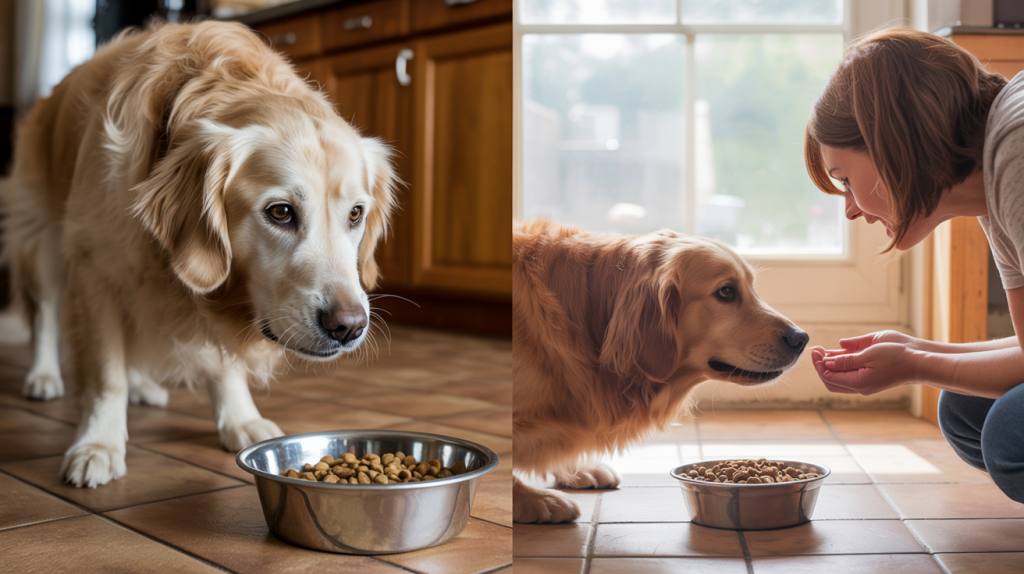This guide covers everything about what is littermate syndrome.
Readers will learn the warning signs, prevention methods, and practical solutions. By the end, they’ll know exactly how to help their puppies grow into confident, independent dogs.
What is Littermate Syndrome?
Littermate syndrome happens when two puppies from the same litter live together. These dogs become too close to each other. They form a bond that’s too strong.
This might sound sweet, but it creates problems. The puppies focus only on each other. They ignore humans and other dogs. They become anxious when separated.
The syndrome doesn’t just affect real littermates. It can happen with any two puppies of similar age. Even puppies from different litters can develop this condition.
Key signs include:
- Dogs won’t listen to commands when together
- Extreme anxiety when separated
- Fighting between the two dogs
- Poor social skills with other dogs
- Difficulty bonding with humans
Red Flags to Watch for in Puppy Siblings
Sometimes, raising puppy siblings can lead to problems. These issues can affect their behavior, training, and bond with humans. It’s important to spot red flags early so you can fix them.
1. Too Attached to Each Other: If the puppies cry or panic when they are apart, they may be too attached. This is called littermate syndrome. It can stop them from bonding with people or learning to be alone.
2. Fighting or Aggression: Puppies play rough, but real fighting is a problem. Watch for growling, snapping, or injuries. This could mean they are fighting for space or attention.
3. One Puppy Is Shy or Afraid: Sometimes, one puppy becomes quiet or scared while the other takes the lead. This can cause stress and poor confidence in the shy puppy.
4. Trouble with Training: If the puppies don’t listen to commands or get too distracted by each other, training will be hard. They may copy each other’s bad behavior, too.
5. Not Bonding with You: Puppy siblings may focus more on each other than on you. This makes it harder for them to trust and obey their owner.
6. Food or Toy Guarding: If one puppy gets angry when the other comes near food or toys, this is a red flag. It can lead to fights and stress in the home.
What Causes Littermate Syndrome?
Littermate Syndrome happens when sibling puppies form a stronger bond with each other than with humans. This can lead to fear, anxiety, poor social skills, and trouble with training.
They Never Learn to Be Alone
Puppies who stay together never experience being by themselves. They always have their sibling for comfort and play.
This means they never learn independence. They don’t know how to handle stress alone. Being apart feels scary and dangerous to them.
Competition Creates Problems
Two puppies compete for everything in your home. Food, toys, attention, and space all become things to fight over.
This competition damages their relationship. It also makes them see you as a resource to guard from each other.
Divided Human Attention
With two puppies, your time gets split in half. Each dog gets less individual training and bonding time with you.
The puppies learn to rely on each other instead of building relationships with humans. You become less important to them.
They Form Their Own Pack
Two puppies create their own mini-pack that excludes humans. They make decisions together and protect each other from outside influences.
This pack mentality prevents them from integrating into your family properly.
Missing Critical Learning Time
Puppies need individual experiences to develop properly. When they do everything together, they miss important learning opportunities.
They don’t practice being brave alone. They don’t learn to think independently. All their experiences are shared.
Training Becomes Impossible
Two puppies together can’t focus on learning. They distract each other constantly. Playing with their sibling is more fun than listening to you.
This means they miss basic training during the crucial puppy months.
Fear Builds Over Time
What starts as mild discomfort when apart becomes serious anxiety disorder. The fear grows stronger each time they’re separated.
This creates a cycle where they need each other more and more. The need becomes so strong it’s like an addiction.
Missed Socialization Window
Puppies have a critical period from 3-14 weeks old for socialization. During this time, they need to meet many different people and situations.
When they focus only on each other, they miss this crucial window. They become fearful of new experiences later.
Is Littermate Syndrome Real or a Myth?
Littermate Syndrome is real and is seen by many dog trainers and vets. It happens when puppies from the same litter grow up together and become too attached to each other.
This strong bond can cause problems like fear, poor training, and anxiety when they are apart. Not all sibling puppies get it, but it’s common enough to watch out for.
Some people think it’s a myth because not every pair of puppies has these issues. With the right training and care, some siblings grow up just fine.
So, Littermate Syndrome is real, but it doesn’t happen to all sibling puppies. It depends on how they are raised, trained, and socialized.
How to Prevent Littermate Syndrome
Littermate syndrome occurs when two puppies become overly dependent on each other, leading to anxiety, training difficulties, and behavioral problems. Prevention requires immediate and consistent intervention.
Daily Separation Requirements
Feed puppies in separate rooms using individual bowls and crates. Train each puppy alone for 15 minutes daily.
Practice separations starting at 10 minutes, gradually increasing to several hours. Take solo walks and car rides with each puppy regularly.
Individual Training and Socialization
Enroll puppies in different training classes when possible. Expose each puppy to new people, places, and dogs separately.
Give individual attention and playtime to prevent co-dependence. Reward only the puppy performing the command, never both simultaneously.
Warning Signs Requiring Immediate Action
Watch for excessive crying when separated, inability to focus without the sibling present, extreme shyness around strangers when alone, or resource guarding between siblings.
These indicate the syndrome is developing and require increased prevention efforts.
Essential Equipment and Setup
Provide separate crates, beds, toys, and feeding stations.
Use different colored collars for easy identification. Create individual safe spaces where each puppy can retreat independently.
Long-term Management
Continue separation practices through the first 18 months. Maintain individual training sessions as dogs mature.
Ensure each dog can function alone for extended periods without distress.
Success Indicators
Each puppy should eat, sleep, and play comfortably alone. Both dogs should respond to commands whether together or apart. Neither should show distress during reasonable separations.
Prevention must start immediately and continue consistently for 6-18 months. The intensive effort prevents two problem dogs and creates two well-adjusted, independent pets.
When to Get Professional Help
Sometimes, training two puppies at home isn’t enough. If you’re seeing serious problems, it’s a good idea to talk to a professional dog trainer or a vet.
Signs You May Need Help:
- One or both puppies panic when separated
- They ignore you and only respond to each other
- Fighting or aggression starts to happen
- They don’t improve with training
- One dog seems nervous or scared all the time
Who Can Help:
- Certified dog trainers: They teach good behavior and fix bad habits
- Veterinarians: They check for health or behavior issues
- Animal behaviorists: Experts who handle serious behavior problems
Don’t wait too long. Getting help early can prevent worse problems later.
Myth-Busting: The Truth About Raising Sibling Puppies
Raising two puppies from the same litter might sound fun, but there are a lot of myths related what is littermate syndrome. Let’s clear them up.
Myth 1: Two Puppies Are Easier Than One
Truth: Raising two at once is double the work. They both need separate training, attention, and care. It’s not just twice as hard—it’s more.
Myth 2: They’ll Keep Each Other Company and Be Fine
Truth: Puppies that are always together can become too attached. This is called littermate syndrome. It can lead to fear, anxiety, and poor social skills.
Myth 3: You Can Train Them Together
Truth: Puppies learn better when trained one-on-one. Together, they’re often distracted and less focused on you.
Myth 4: Crating Them Together Is Comforting
Truth: Each dog needs its own space to feel safe and learn independence. Sharing a crate can cause stress or even fights later.
Myth 5: If Problems Start, They’ll Just Grow Out of It
Truth: Most behavior issues get worse without training. Early help is the best way to fix the problem.
The Bottom Line
Remember that prevention works better than treatment. If someone is considering two puppies, waiting a few months between adoptions creates better outcomes.
For those already dealing with littermate syndrome, patience and professional help can turn things around.
Ready to help your puppies thrive independently, related to what is littermate syndrome? Start implementing these separation techniques today, or consult a certified dog trainer for personalized guidance.











